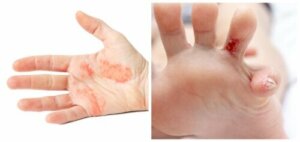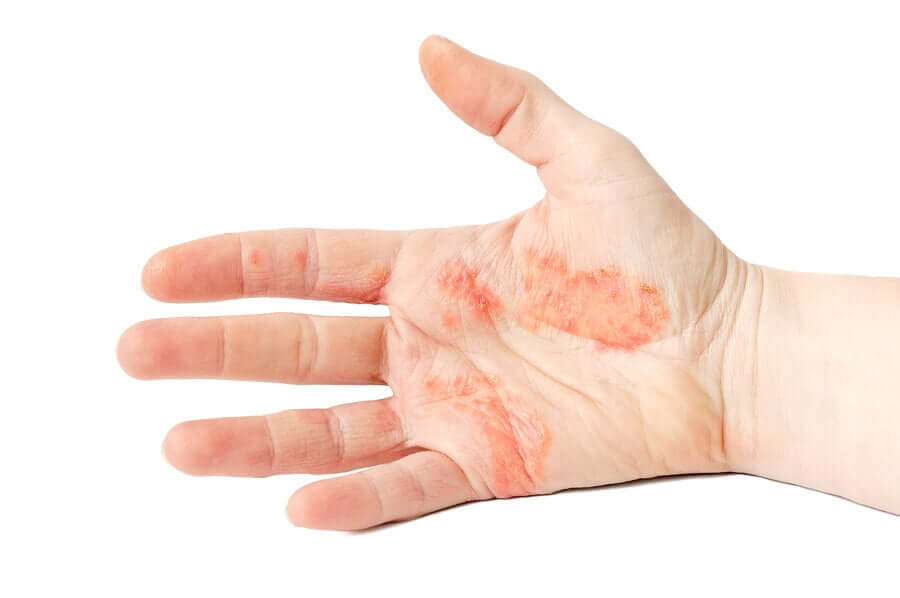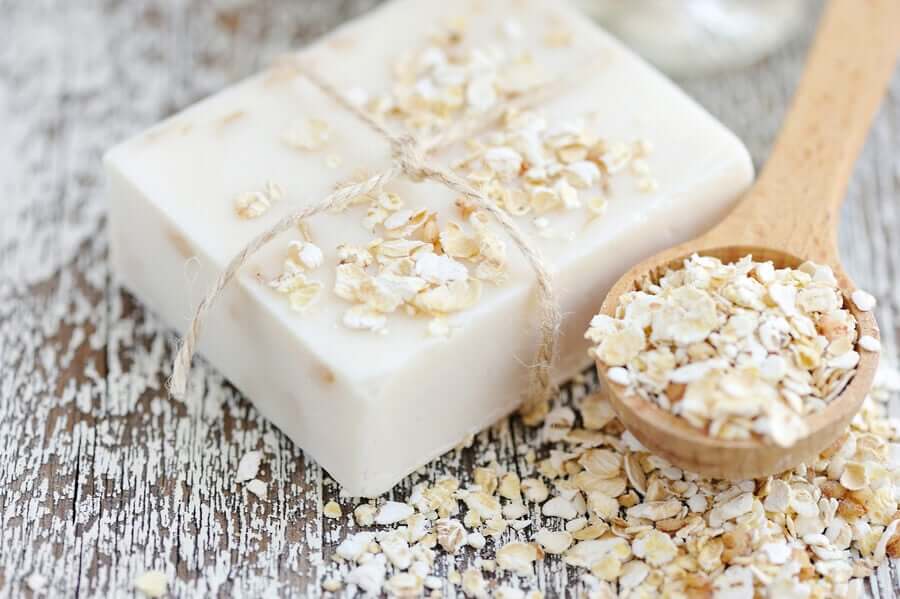Dyshidrotic Eczema: Everything You Need to Know

Dyshidrotic eczema, also known as dyshidrosis, is a type of skin inflammation that appears on the hand and feet in the form of small liquid-filled blisters. In many cases, the condition is chronic, is not contagious, and can include outbreaks as well as periods of remission. Often, dyshidrosis is seasonal, causing more outbreaks during spring and summer.
The cause of this skin disorder is internal, meaning it originates within the body. In fact, it’s often associated with factors like stress and allergies. While it often appears for the first time in individuals between the ages of 15 and 30, it can affect people of any age or gender.
The causes of dyshidrotic eczema

Experts are unsure of the exact cause of dyshidrotic eczema of the hands and feet. However, they do know that certain factors can increase a person’s chances of developing the condition. Among these factors, we can mention the following:
- Emotional stress
- Allergies–to perfume, medications, or metals
- Suffering from an infection caused by bacteria or fungi on the skin
- Suffering from atopic dermatitis or other allergic illnesses like asthma or hay fever
- Pregnancy can also be a triggering factor, given the hormonal changes that take place
What are the symptoms of dyshidrotic eczema of the hands and feet?
This condition tends to appear first between the fingers and then extends to the palms of the hands. It can also appear on the soles and sides of the feet. At the same time, it’s uncommon for dyshidrosis to appear on the back of the hands or the armor or other parts of the body.
The symptoms of dyshidrotic eczema of the hands and feet:
- The appearance of small blisters that often cause intense itching.
- Peeling of the skin: As a result of this condition, erosions may appear in the skin, which can be very painful.
- Irritation and thickening of the skin. This occurs when people who suffer from eczema scratch the affected area. For this reason, there may be a secondary skin infection.
The evolution of dyshidrotic eczema of the hands and feet can vary. Often, it disappears on its own in just a matter of 3 or 4 weeks, though it tends to reappear. After a period without lesions, the following episode may last for weeks or even months.
You may also want to read: 5 Natural Remedies to Relieve Itching
The treatment of dyshidrotic eczema of the hands and feet

To date, scientists have yet to discover a treatment that’s capable of providing a definitive cure for dyshidrosis. However, there are ways to treat and control outbreaks. In that sense, the treatments that those who suffer from this condition can apply to find relief are the following:
- High-potency topical corticosteroids for one or two weeks. Depending on the intensity of the lesion and the current phase, oral corticosteroids may also be necessary.
- Antibiotics: In the case of a secondary infection of the lesions.
- Emollient products: These are often useful for reducing dryness of the skin.
- Oral antihistamines: These pharmaceuticals help to calm the itchy sensation that dyshidrosis causes.
- Others. Doctors may recommend more specific treatments, such as phototherapy.
Read: Weakened Immune System: What to Look For
Recommendations for controlling outbreaks

Below, we’ll provide a series of recommendations that may help keep outbreaks of dyshidrotic eczema of the hands and feet under control.
- Hydrate your hands several times a day.
- Avoid contact with irritating substances.
- Wash your hands and feet with gentle, unscented soaps.
- Use gloves when performing household tasks.
- Be diligent when it comes to foot hygiene (wash and dry them properly).
- Avoid scratching, as this may cause the episode to last even longer and increase the risk of a secondary infection.
- Wear shoes that have a leather sole, as natural materials allow your skin to breathe better. In the case of excess sweating, you should change your sock at least twice a day.
Given that stress is one of the factors that contribute to and worsen dyshidrosis, try to find ways to manage stress as best as possible. With that in mind, besides the above suggests, it’s a good idea to keep stress, anxiety, and nervousness under control. For example, by practicing sports of applying relaxation and breathing exercises.
Yoga, tai chi, and medication can also be very helpful, so give them a try!
All cited sources were thoroughly reviewed by our team to ensure their quality, reliability, currency, and validity. The bibliography of this article was considered reliable and of academic or scientific accuracy.
- Gómez, M., Beirana, A., & Lopez, L. (2001). Dishidrosis asociada a dermatitis atópica en un paciente preescolar. Revista Del Centro Dermatológico Pascua.
- Garcia-Navarro, X., Corella, F., Roé, E., Dalmau, J., & Puig, L. (2006). Dishidrosis. Farmacia Profesional.
- Urbina, F., Pérez, A., Requena, L., & Rütten, A. (2013). Hipoqueratosis circunscrita palmar o plantar. Conocimientos y controversias tras 10 años de su descripción. Actas Dermo-Sifiliográficas. https://doi.org/10.1016/j.ad.2013.05.011
- Garcia-Navarro, X., Corella, F., Roé, E., Dalmau, J., & Puig, L. (2006). Dishidrosis. Farmacia Profesional, 20(4), 70-73. Retrieved from http://www.elsevier.es/es-revista-farmacia-profesional-3-articulo-dishidrosis-13087206
This text is provided for informational purposes only and does not replace consultation with a professional. If in doubt, consult your specialist.








